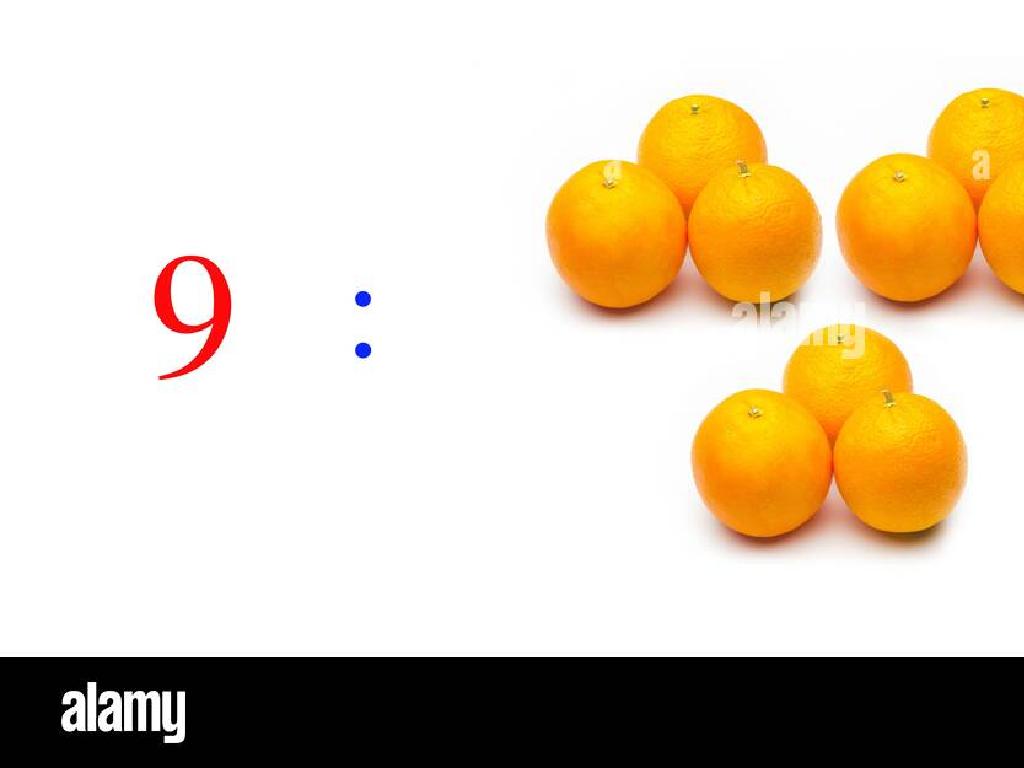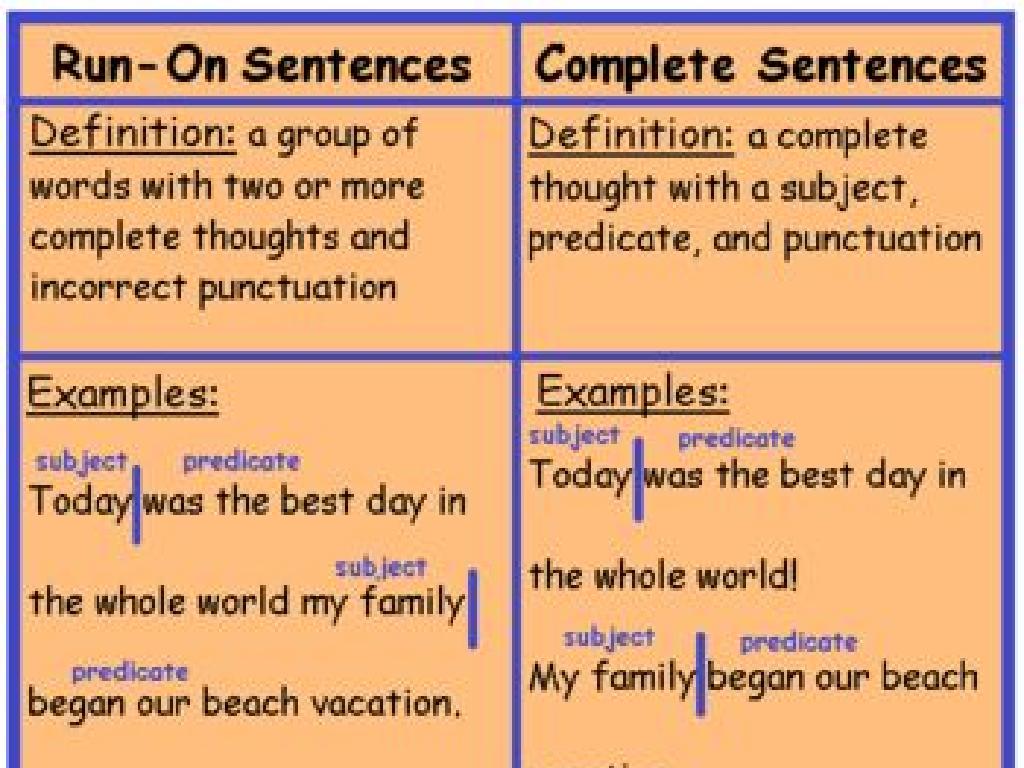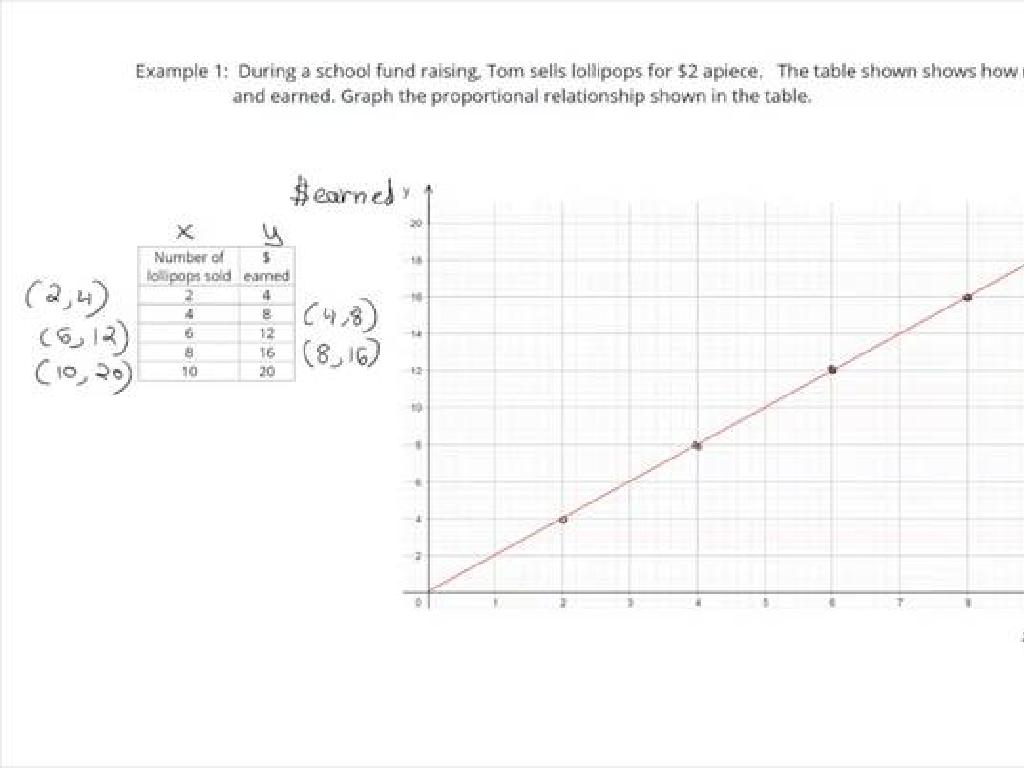Earth S Rotation And Orbit
Subject: Science
Grade: Fourth grade
Topic: Astronomy
Please LOG IN to download the presentation. Access is available to registered users only.
View More Content
Today’s Adventure: Earth s Rotation and Orbit
– Earth spins on its axis
– This spinning is why we have day and night.
– Earth orbits the sun
– It takes one year to go around once.
– Day/Night & Seasons
– Rotation causes day/night, orbit causes seasons.
– Gravitational effects
– Tides are caused by gravity from the moon and sun.
|
This slide introduces students to the fundamental concepts of Earth’s rotation on its axis and its orbit around the sun. Explain that the rotation of Earth is like a spinning top, which leads to the cycle of day and night. Emphasize that Earth’s orbit is the path it takes to travel around the sun, which takes one full year and is responsible for the changing seasons. Discuss how Earth’s movements have direct effects on our daily lives, including the cycle of day and night, the changing seasons, and even the ocean tides. Use simple analogies and hands-on activities, like spinning a globe or simulating orbits with objects, to help students visualize these concepts.
Understanding Earth’s Rotation
– Earth spins like a top
– Just like a top spins on its axis, Earth spins around an imaginary line called its axis.
– Rotation: Earth’s spinning movement
– Rotation is the spinning of Earth on its axis, taking 24 hours to complete.
– One rotation equals one day
– Each complete spin or rotation of Earth takes about 24 hours, which is the length of one whole day.
– Night and day explained
– As Earth rotates, different parts face the sun or away from it, causing day and night.
|
This slide introduces the concept of Earth’s rotation to fourth-grade students. Begin by explaining that Earth spins around an imaginary line called its axis, similar to how a top spins. Emphasize that this spinning movement, called rotation, is responsible for the passage of one day, taking approximately 24 hours to complete. Clarify that the side of Earth facing the sun experiences daylight, while the opposite side experiences darkness, leading to night. Use a globe and a flashlight to demonstrate this concept in class, showing how rotation leads to the cycle of day and night. Encourage students to ask questions and think about how Earth’s rotation affects their daily lives.
Effects of Earth’s Rotation
– Earth’s rotation creates day and night
– As Earth spins, areas in light experience day and those in dark have night.
– Rotation leads to different time zones
– Earth is divided into 24 zones, each with its own time based on Earth’s spin.
– Rotation influences weather patterns
– The spinning causes winds and ocean currents to move in certain directions.
|
This slide aims to explain the effects of Earth’s rotation on our daily lives. The rotation of Earth on its axis leads to the cycle of day and night as different parts of the Earth face towards or away from the Sun. This rotation also divides the planet into time zones, which are necessary due to the changes in local solar time as Earth spins. Additionally, Earth’s rotation affects weather patterns; it’s responsible for phenomena such as the Coriolis effect, which causes winds and ocean currents to curve, influencing climate and weather. Encourage students to think about how the time of day changes and to observe weather patterns to connect these concepts to their experiences.
Exploring Earth’s Orbit
– Earth’s orbit is its path around the Sun
– Like a huge invisible track in space
– Completing one orbit takes a year
– 365 days to circle once around the Sun
– Our orbit is an elongated circle
– It’s not a perfect circle, but an ellipse
– Orbit affects seasons and climate
– Winter is colder because Earth is farther from the Sun on its orbital path
|
This slide introduces students to the concept of Earth’s orbit around the Sun. Explain that an orbit is the path an object takes in space as it goes around a star, planet, or moon. Earth’s orbit around the Sun takes approximately one year, which is the length of time we consider a year. The orbit is not a perfect circle but an ellipse, which contributes to the varying distances from the Sun throughout the year, affecting our seasons and climate. Use a flashlight and a ball to demonstrate how the orbit and tilt of the Earth work together to create seasons. Encourage students to ask questions and think about how the orbit might influence their daily lives, such as the length of days and nights.
Effects of Earth’s Orbit
– Reasons behind the seasons
– Earth’s tilt & orbit create seasons
– Leap year explained
– Extra day every 4 years for solar year alignment
– Orbit’s impact on climate
– Distance from sun affects temperatures
|
This slide aims to explain the effects of Earth’s orbit on our planet. Students will learn that the tilt of the Earth’s axis and its orbit around the sun are the reasons why we experience seasons. They will also understand what a leap year is and why it is necessary to keep our calendar in alignment with the Earth’s revolutions around the sun. Additionally, the slide will cover how the Earth’s orbit influences climate by affecting the distance from the sun, leading to variations in temperature. Use examples like the difference in temperature during summer and winter to illustrate these concepts. Encourage students to think about how the changing seasons affect their daily lives and the environment.
Rotation vs. Orbit: Earth’s Movements
– Earth’s rotation: spins on its axis
– Rotation causes day and night
– Earth’s orbit: travels around the Sun
– One orbit takes about 365.25 days
– Together, they shape our calendar
– Leap years add a day every 4 years
– Fun facts about Earth’s journey
– Earth’s tilt causes seasons
|
This slide aims to explain the concepts of Earth’s rotation and orbit to fourth-grade students. Rotation refers to the Earth spinning on its axis, which takes about 24 hours and results in day and night. Orbit is the Earth’s path as it travels around the Sun, which takes approximately 365.25 days, creating our year. These movements are crucial for our understanding of time, as they determine the length of days, years, and the occurrence of leap years. Additionally, Earth’s tilt during its orbit leads to the changing seasons. Engage students with interesting facts, such as how the extra 0.25 day in our orbit results in leap years, or how without Earth’s tilt, we wouldn’t experience seasons. Encourage curiosity by asking if they can think of any other effects these movements might have on our planet.
Hands-On Activity: Earth s Rotation and Orbit
– Model Earth s rotation using globes
– Simulate Earth s orbit with flashlights and balls
– Use a flashlight as the sun and a ball as the Earth to show how Earth orbits around the sun
– Engage in practical learning
– Reflect on the activity
– Think about how day, night, and seasons happen because of Earth s rotation and orbit
|
This slide introduces a hands-on activity designed to help students understand the concepts of Earth s rotation and orbit through interactive modeling. For rotation, students will use globes to visualize how the Earth spins on its axis. For orbit, they will use balls to represent the Earth and flashlights to represent the sun, demonstrating how the Earth orbits around the sun. This kinesthetic approach reinforces learning by allowing students to physically engage with the concepts. After the activity, encourage students to reflect on their experience and discuss how it relates to day and night cycles, as well as seasonal changes. Provide guidance and supervision to ensure each student can participate and understand the principles being taught.
Class Activity: Earth’s Journey
– Create a Human Solar System
– Students demonstrate Earth s movements
– Act as Earth rotating on an axis and orbiting the sun
– Discuss the experience
– How did it feel to spin and circle around?
– Reflect on Earth’s rotation and orbit
– Think about how Earth’s movements affect our days and years
|
This interactive class activity involves students in a physical representation of the Earth’s rotation on its axis and orbit around the sun. Divide the class into groups, with one student representing the sun, one as Earth, and others as different planets, if desired. The ‘Earth’ student will spin to show rotation and walk in a circle around the ‘sun’ to demonstrate orbit. After the activity, lead a discussion asking students to share their feelings during the rotation and orbit. Encourage them to think about the effects of these movements, such as day and night or the change of seasons. This kinesthetic approach helps solidify the concepts of Earth’s rotation and orbit through experiential learning.
Wrapping Up: Earth s Rotation & Orbit
– Recap: Earth s rotation & orbit
– Earth spins on its axis & orbits the sun
– Daily & seasonal changes
– Rotation causes day/night. Orbit causes seasons.
– Q&A session
– Time to ask questions about today s lesson!
|
As we conclude today’s lesson, remind the students of the two main movements of Earth: rotation on its axis and orbit around the sun. Emphasize how these movements are responsible for the day-to-night cycle and the changing seasons. Encourage the students to think about how these astronomical phenomena affect their daily lives, such as why we have daylight during certain hours or why the weather changes throughout the year. Open the floor for questions, allowing students to clarify any doubts and to explore their curiosity about Earth’s place in the solar system. Be prepared with prompts to stimulate discussion if students are hesitant to ask questions.





